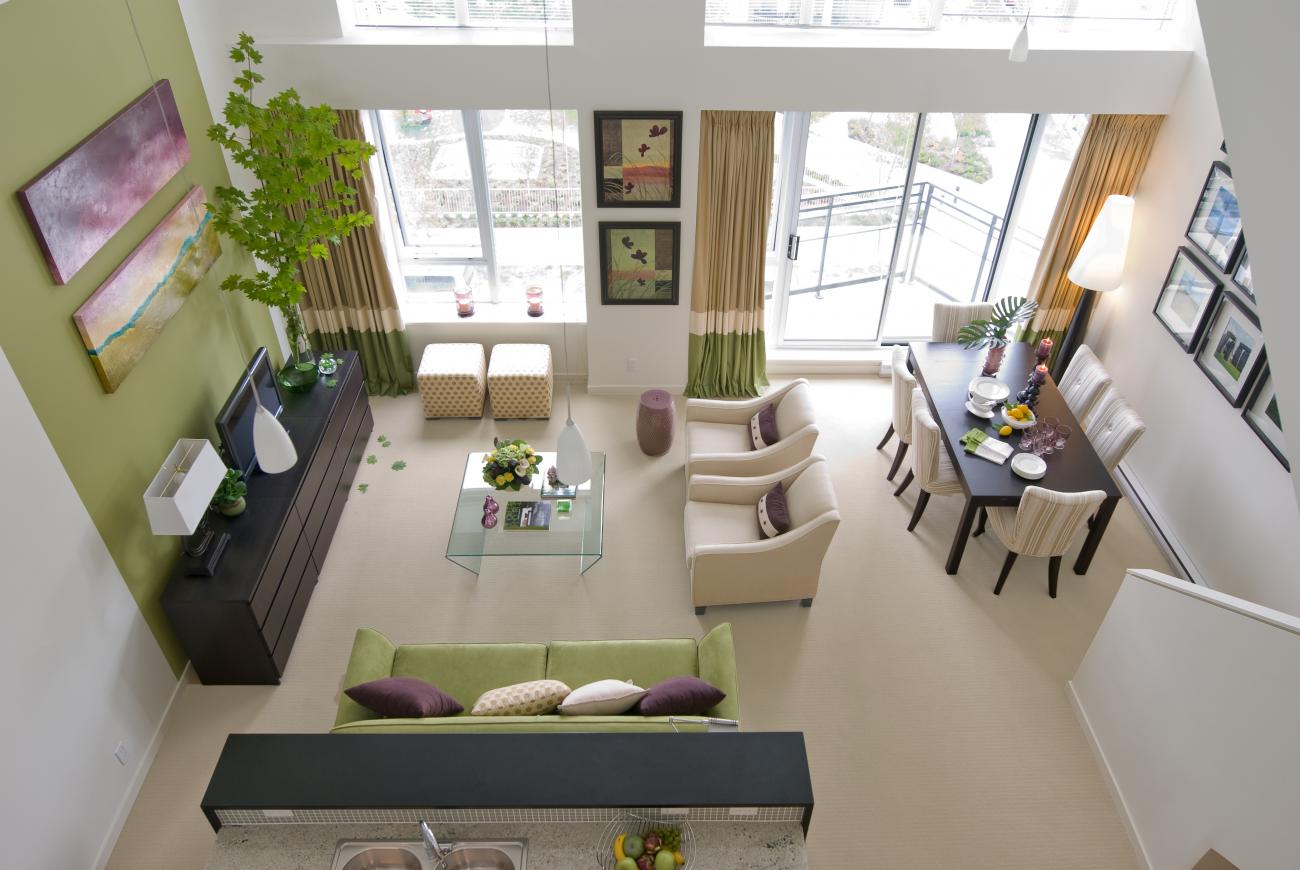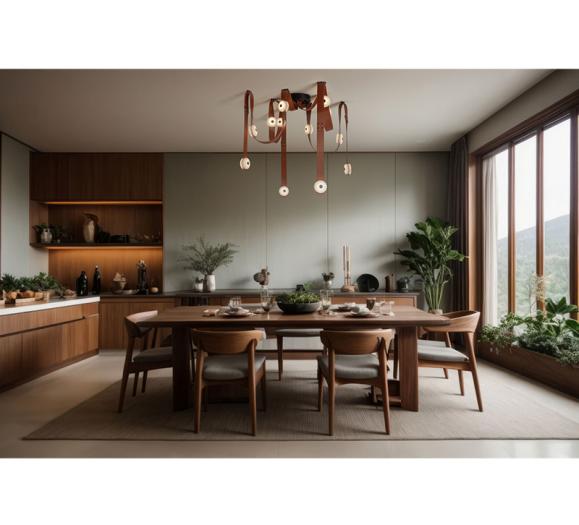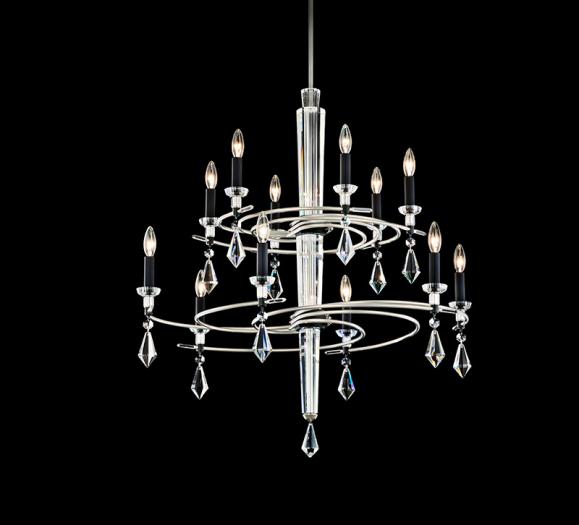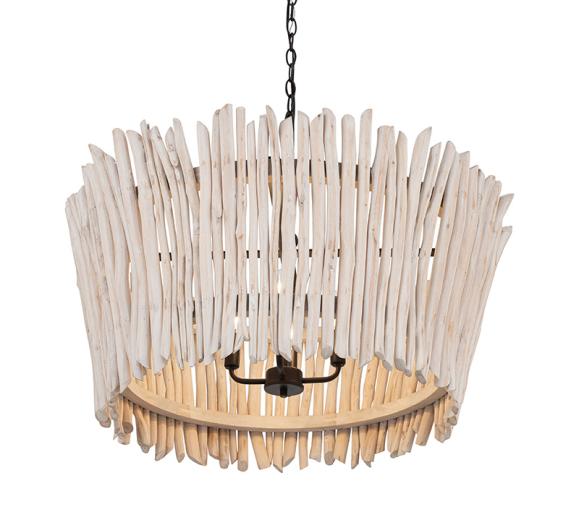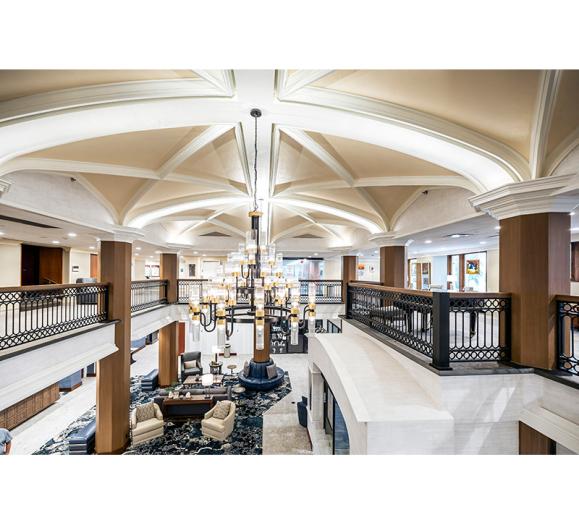“Smart” homes evoke images of modernist, chrome-plated houses decked out in stainless steel with automated everything and a refrigerator that talks to you.
A true smart home doesn’t necessarily have a toilet that flushes on its own, though— its lighting, color and design combine to create a space where people live happier, healthier lives.
Color for Emotional Health
It’s easy to understand the science behind color psychology, the study of hues as a predictor of human behavior, because there isn’t any. There’s no scientific proof that green “slows human metabolism and produces a calming effect,” as colorpsychology.org would have you believe. That’s not to say that color doesn’t matter, but its meaning is usually indicative of our experiences and associations with it.
We associate green with nature because nature is mainly green. Color does matter, but as true color expert, author and teacher Maria Killam will tell you, it won’t help you concentrate or relax.
“Is painting your house the right red or the right orange going to create this magical, emotional effect on you? No, it’s not actually,” Killam says.
But what color can do for one’s emotional health is simple: make the person happy. Research shows that happy people can have stronger immune systems, react better to stress and even live longer. Being happy with the color scheme of a home may not turn an Ebenezer Scrooge into a Mickey Mouse, but it will certainly help.
“What makes people emotionally healthy is having a house that they love when they walk in the door,” she says.
That’s where Killam comes in. Over the course of her career, Killam has helped thousands of clients find happiness with the color of their homes by teaching them how to make colors work together. Her “Understanding Undertones” system matches colors with the correct undertones, and her interior design expertise helps clients work those colors and undertones into all aspects of the room, not just the walls.
“Your wall color can’t do all the heavy lifting,” Killam explains. “The wall color is not going to give you a look and a feel. You need end tables. You need lamps. You need accessories.”
So how can other interior designers and lighting consultants better understand color? Having confidence in color is key, as is understanding where color comes from. Most of the designers that come to Killam’s classes want to be more confident in choosing the right color for their clients. Her system makes it easy for designers to add undertones to any color a client wants.
And remember: Layering color between all factors in a room works best. Designers should be scaling color in small, medium and large pieces, and lighting consultants need to understand how lighting can affect color, Killam says.
Design for Mental Health
The design of a space is just one factor that contributes to a person’s mental health, but it is an important one, says Dr. John Ziesel, author and President of Hearthstone Alzheimer Care. Ziesel’s research with Alzheimer’s patients and their environments illustrates just how big of a role the physical environment can play in the mental health of a person. What he’s learned applies not only to his patients, but to others as well.
“The designed environment plays a role in learning, remembering, feelings, relating to others and behavior,” he says. “Our brain uses those environments in these ways.”
When designing a room or home, Ziesel names five factors to consider: sleep, diet, exercise, stress reduction and purpose. When the physical environment is more conducive to these factors, the people living in the space will have the means to be healthier.
When designing a bedroom, for example, Ziesel says a room with 100 percent blackout capabilities and few bright colors is best, as these factors often keep people awake. It should also be a room free of whatever excites the user, which includes TVs, tablets and other non-electronic possessions that stimulate brain activity and hinder relaxation.
“What you want to do is create the life outside where you’re sleeping as opposed to inside,” Ziesel explains.
Designers often make decisions in the name of efficiency, but efficiency hinders exercise, and it isn’t always best for diet either. People should be moving around their homes, Ziesel stresses, and a home where everything is in arm’s reach does not encourage exercise. Though a well-designed kitchen will make it easier to prepare more than a frozen pizza, ultimate efficiency isn’t necessary. Essentially, it’s okay to keep pots and food on opposite ends of the kitchen.
“Efficiency is not the goal,” Ziesel says. “The goal is that you should use your body when you’re getting things done as opposed to everything being done like a machine.”
Stress reduction and purpose go hand-in-hand. While open conceptions may be popular, they don’t always give homeowners private space to be away from each other and decompress, which is especially important when couples and parents and children argue. There should also be space for homeowners to devote to their hobbies, whether that’s woodworking, scrapbooking or reading.
A home that combines these five factors will not solve all the mental ills of the people living in it, but it will make it easier for those living there to make better decisions regarding their health.
“It turns out that these are not only good advice,” Ziesel says, “but they’re also genetically what we need.”
Lighting for Physical Health
We take vitamins, exercise and eat kale all in the name of health, but few ever think about how light might play a crucial role in their health. Dr. Mariana Figueiro, Program Director at the Lighting Research Center and Associate Professor at Rensselaer Polytechnic Institute, studies how light affects the circadian system – among other things – and her research shows that a better understanding of light could be key in the future of lighting design.
In 2004, the Lighting Research Center developed a device called the Daysimeter that monitors a person’s circadian light exposure, and daily rest and activities. The device allows researchers to interpret light as a “stimulus to the circadian system, quantify circadian disruption and circadian stimulus and proscribe light treatments for adjusting circadian phrase.”
In layman’s terms, it tracks the user’s circadian rhythm and monitors the user’s light exposure. Using its data, researchers can make recommendations for best lighting practices.
With funding from the Swedish Energy Agency, Figueiro is now working on a project to regulate a person’s circadian rhythm with a smart home component. Participants will wear the Dayismeter throughout the day to monitor what types of light he or she is exposed to. When the person comes home at night, the sensory band will download its data wirelessly to a hub installed in the home. The hub will then adjust the lighting in the home to fit the needs of the person’s circadian rhythm. The technology needed is still in the production phase, but Figueiro hopes to do a demonstration next year.
“We’re basically trying to understanding lighting characteristics and how we implement that,” she says.
Figueiro’s research with Alzheimer’s patients delivered exciting results that showed the right lighting could positively affect a patient’s health. In her 2015 study, she hypothesized that because Alzheimer’s patients spend so much time sitting at tables, the tables themselves should be illuminated to provide them with more light and to help regulate their circadian rhythms.
The study found that those exposed to the illuminated tables greatly increased the amount of sleep they got. The exposure also reduced feelings of depression and agitation.
“Light matters,” Figueiro says. “There’s no question about it, but I think more importantly light/dark patterns matter. Dark is just as important as light, and timing of light exposure is just as important as amount in the spectrum.”
With all of her research, Figueiro sees several new trends developing in the lighting industry. Individualized and customizable lighting options, such as plug-ins and illuminated surfaces, may see an increase in popularity.
“It’s time now for designers to stop thinking about recessed cans in the ceiling,” she says. “Be creative and think about surfaces as something to illuminate.”



